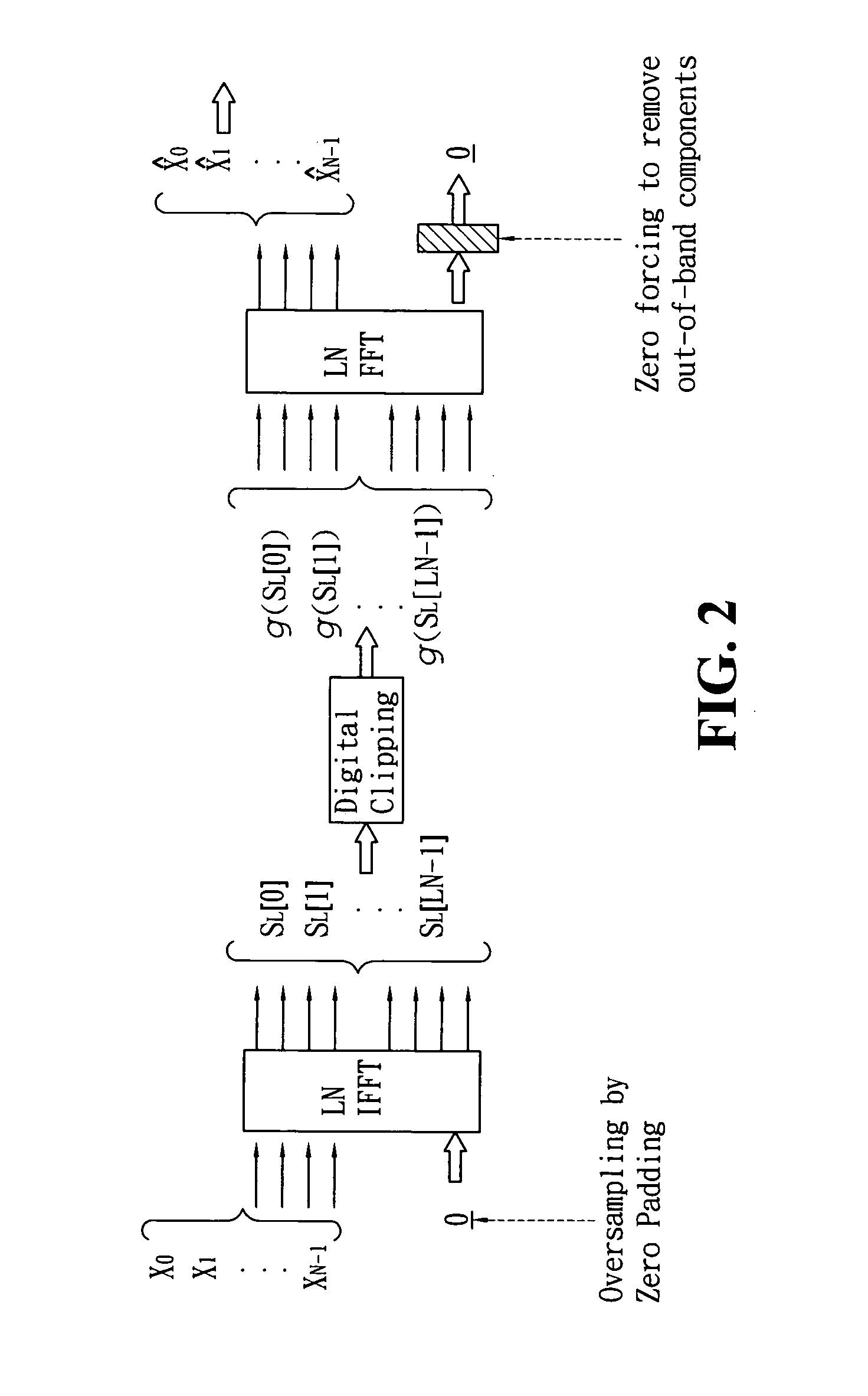Method for reducing peak-to-average power ratio of multi-carrier modulation
- Summary
- Abstract
- Description
- Claims
- Application Information
AI Technical Summary
Benefits of technology
Problems solved by technology
Method used
Image
Examples
Embodiment Construction
[0024] As explained earlier, the RCF method can effectively reduce PAPR and out-of-band spectrum in an MCM system. However, as the number of recursions increases, RCF could lead to severe clipping distortion and a phenomenon called error floor. The present invention, therefore, applies BD control to the baseband data after OCF during the RCF recursive process, so as to achieve lower error rate and simultaneously reduce PAPR and out-of-band spectrum. Compared to the original RCF method, the present invention not only preserves the benefit of RCF, but also achieves significantly lower error rate and removes the error floor phenomenon for an AWGN channel with high SNR. The method provided by the present invention is therefore referred as recursive clipping and filtering with bounded distortion (RCFBD) hereinafter.
[0025] A preferred embodiment of the present invention is described as follows using a simplified MCM communication system as an example, whose transmitter is shown in FIG. 1...
PUM
 Login to View More
Login to View More Abstract
Description
Claims
Application Information
 Login to View More
Login to View More - R&D
- Intellectual Property
- Life Sciences
- Materials
- Tech Scout
- Unparalleled Data Quality
- Higher Quality Content
- 60% Fewer Hallucinations
Browse by: Latest US Patents, China's latest patents, Technical Efficacy Thesaurus, Application Domain, Technology Topic, Popular Technical Reports.
© 2025 PatSnap. All rights reserved.Legal|Privacy policy|Modern Slavery Act Transparency Statement|Sitemap|About US| Contact US: help@patsnap.com



